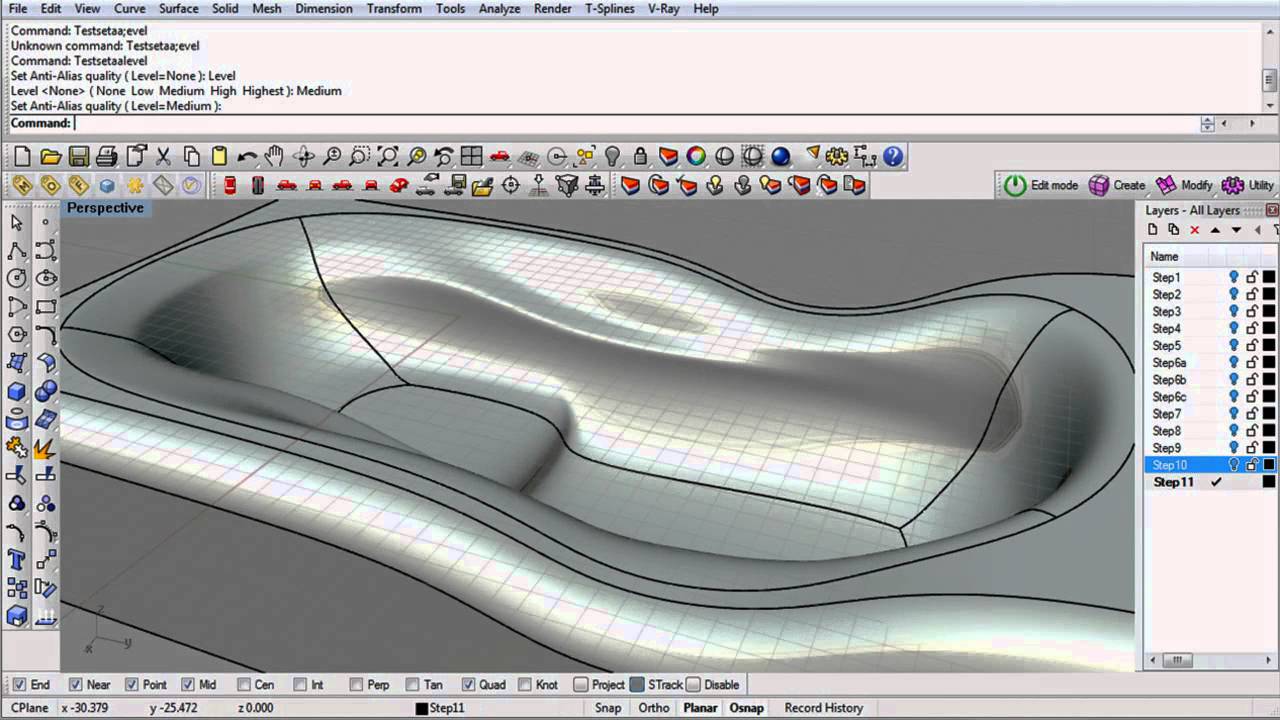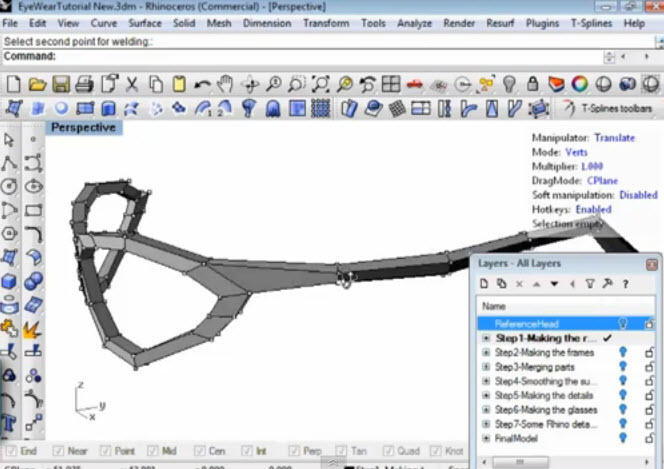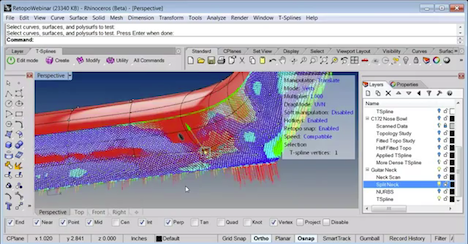- 1T-splines for Rhino
- 2Creating T-spline surfaces
- 3Editing T-spline surfaces
- 4Modifying T-spline surfaces
Autodesk T-Splines Plug-in for Rhino Crack + Serial Number (Updated) Autodesk T-Splines Plug-in for Rhino was developed as a powerful and useful Rhinoceros app. Autodesk T-Splines Plug-in for Rhino can be used by CAD design to easily build kind CAD econobox. T-Splines for Rhino 3.5.8975 can be downloaded from our software library for free. T-Splines for Rhino was developed to work on Windows XP, Windows 7, Windows 8. Picktorrent: t splines 5 for rhino - Free Search and Download Torrents at search engine. Download Music, TV Shows, Movies, Anime, Software and more. The T-splines manipulators are similar to the Gumball in Rhino 5. The manipulators that come with the T-Splines plugin can be used on all T-Splines and Rhino objects, including NURBS and meshes. And the Gumball in Rhino 5 can be used in T-splines edit mode as well. Autodesk T-Splines Plug-in for Rhino r8031. Create your designs with a fast, natural and flexible workflow. Break free from the rigidity of traditional surface modeling approaches. Autodesk T-Splines Plug-in for Rhino helps designers create smooth, high-quality CAD models and quickly achieve the right look and feel.
T-splines for Rhino
Create and edit fluid, organic shapes for design and manufacturing
T-splines is a fully integrated Rhino plugin that adds several new workflows and tools to generate free-form surfaces, and brings polygonal modeling to Rhino. T-splines are compatible with traditional CAD NURBS technology and offers improvements in flexibility, editabillity and ease-of-use. T-Splines can be used to create an entire model, or it can be used to add organic components to Rhino models.
T-splines polygonal modeling
In 3D computer graphics, polygonal modeling is an approach for modeling objects by representing their surfaces using polygons. The basic object used in polygonal modeling is a vertex, a point in three dimensional space. Two vertices connected by a straight line become an edge. Three vertices, connected to each other by three edges, define a triangle, which is the simplest polygon. Four sided polygons (generally referred to as quads) and triangles are the most common shapes used in polygonal modeling. A group of polygons which are connected together by shared vertices is referred to as a mesh.
T-spline surfaces can be viewed as boxy meshes or as smooth surfaces. The T-spline mesh is really just a fast, simple, unsmoothed way to visualize the T-spline; when a T-spline is displayed as a boxy mesh, it is in “box mode.”
T-splines toolbar
Once T-Splines for Rhino is installed, a T-Splines toolbar will appear. This toolbar can be docked with other Rhino toolbars. Additional toolbars will appear by clicking and holding on each of the buttons. If the toolbar is lost, it can be recovered by typing “Toolbar” in the Rhino command line, and selecting “T-Splines” from the toolbar list.
Creating T-spline surfaces
There are six ways to generate a T-spline surface. T-spline surfaces can be created from a primitive, from a control polygon of lines, from lofting curves, and from skinning a network of curves. T-spline surfaces can also be generated by conversion from NURBS and conversion from polygon meshes. Each approach can be used for either creating a complete model or just for making a base model for further editing. All the create options can be found in the create toolbar.
Creating T-splines from a basic shape (primitive)
One way to begin a model is by using primitives. These are basic geometric figures that can be edited and combined to create complex models. There are seven T-spline primitive shapes: box, plane, sphere, cylinder, cone, torus, and quadball. Click on the small triangle in the lower right corner of the primitives button to open the primitives toolbar.
Creating T-splines from lines
The tsFromLines command provides a way to make complex surfaces with predictable results. It can be used to create custom primitives that are closer to the desired final shape than the default primitives. It can generate a closed or an open single surface, rectangular or not, with holes, creases, and all kinds of different topologies.
Creating T-splines by lofting curves
Lofting a T-spline surface can be useful for creating surfaces that contain varying amounts of detail because of the ability it has to include T-points (partial rows of control points). This keeps control points out of areas where they are not necessary and can make for easier editing. The number of control points in the T-spline lofted surface is determined by each curve.
Fit a T-spline to curves
The tsSkin command introduces a way to make organic models, even with holes and appendages, as a single smooth surface, in one operation. tsSkin fits a surface to curves. tsFromLines presents a similar workflow to tsSkin; it takes line segments as an input and creates a surface from the control polygon points rather than fitting a surface to the curves. Because tsSkin is sometimes difficult to control, it is not a recommended workflow for beginners. However, tsSkin can be a powerful surface-creation tool.
Convert a NURBS or mesh to T-splines
Converting an untrimmed NURBS surface, Rhino mesh, or .obj file to a T-spline with the tsConvert command is a push-button operation. However, Not all NURBS and meshes are good candidates for conversion.

Trimmed NURBS converted to T-splines will lose their trimming information.
If converting a polysurface comprised of untrimmed NURBS, if possible, try to have the isoparameteric curves (isocurves) line up across patch boundaries. T-splines will be able to merge the NURBS together even if the isocurves don’t line up, but the resultant surface will be more manageable if you have flowing isocurves instead of irregular sections of chopped isocurves.
A high poly-count mesh may cause Rhino to crash, and if it doesn't, a dense mesh converted to a T-spline, is more difficult to edit.



Editing T-spline surfaces
T-spline surfaces consist of faces, edges, and vertices, and can be displayed as a boxy mesh or as a smooth surface, similar to subdivision surfaces. T-spline surfaces can contain holes, creases, be open or closed, have local detail, be rectangular or non-rectangular, and contain triangles or n-sided faces, while being one unified surface. All T-spline surfaces in Rhino are degree 3.
Pushing and pulling the surface is done frequently when modeling with T-splines. T-spline surfaces can be edited by pushing and pulling its faces, edges, and/or vertices. T-splines has an “edit mode” inside Rhino that contains optimized tools for pushing and pulling the surface.
Turning edit mode on and off
Edit mode is turned on by clicking the green icon. You can also turn on edit mode by pressing CTRL+Spacebar. You can tell that edit mode is on because there will be a small T-Splines icon in the corner of your active viewport.
Manipulator: translate, rotate, scale
Manipulators allow you to quickly rotate, scale, and move parts of a model. The T-splines manipulators are similar to the Gumball in Rhino 5. The manipulators that come with the T-Splines plugin can be used on all T-Splines and Rhino objects, including NURBS and meshes. And the Gumball in Rhino 5 can be used in T-splines edit mode as well.
Face, edge, vertex grips
Rhino users are familiar with vertex grips, or control points. These grips can be moved to shape a curve or a surface, and T-spline surfaces have control points just as NURBS do. In addition, T-splines can be shaped by edge and face grips. In reality, moving an edge grip simply moves two vertex grips at once, and moving a face grip just moves all the grips around the face at once. But it can be faster to manipulate edges and faces instead of groups of control points.
Click the last icon to toggle between selecting objects, faces, edges, or vertices.
Modifying T-spline surfaces
When shaping a traditional NURBS model, complex shapes are often created in a piecewise way by trimming and combining surfaces. Creating a complex T-spline involves a slightly different paradigm. Shapes are made by pushing and pulling the surface, adding more detail, and merging and welding shapes to create organic forms. Rhino commands are then used at the end of the process to add exact details.
There are a number of commands for adding and deleting detail in a T-spline surface. Here we will highlight a few.
Toggle smooth and box mode
T-splines lets you easily toggle between smooth and box mode. Box mode makes it possible to have a clear look at the surface topology.
Extrude
Select a face or faces. Run the tsExtrude command. When the faces are moved by the manipulator, a column of new faces will be added around the original face, connecting it to the surface.
Extruding edges allows you to add more geometry on the borders of your model. To use this command, select an edge or edges to be extruded and run the tsExtrude command. Extruding edges is only permitted on the edge of the surface. Single edges can be extruded, or an entire border can be extruded.
Insert points and edges

The tsInsertPoint command allows you to insert points on edges. It also allows you to extend existing control points. To use the command, click on the edges where you would like to add control points.Edges can be inserted using the tsInsertEdge command. To use this command, highlight the faces or edges where you would like a new edge, and add the edge.There are two options on the command: simple and exact.
Simple insertion can be used both in smooth and box mode. Adding a point with simple insertion will not move the location of any other points, however, the surface shape will likely change.
T Splines For Rhino 5 Torrent
Exact insertion will not change the surface shape. This can only be performed in smooth mode, and it may add more control points than you desire, as well as shift existing control points to keep the surface from changing.